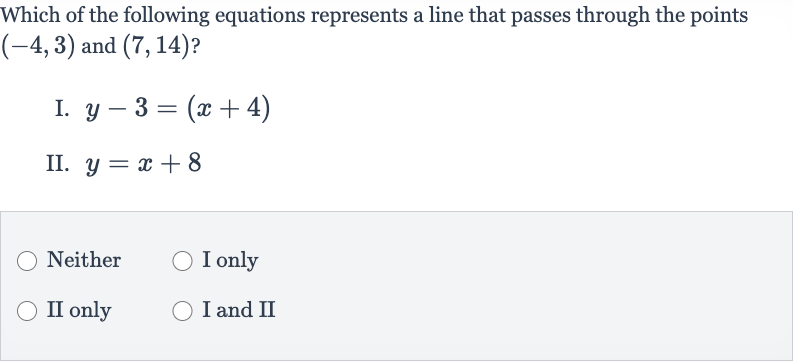Full solution
Q. Which of the following equations represents a line that passes through the points and ?I. II. NeitherI onlyII onlyI and II
- Calculate Slope: To find the equation of the line that passes through two points, we can use the point-slope form of a line, which is , where is the slope of the line and is one of the points it passes through. First, we need to calculate the slope () using the two given points and . The slope is calculated by the formula . Let's calculate the slope:
- Write Equation: Now that we have the slope, we can use either point to write the equation of the line in point-slope form. Let's use the point .The equation will be , which simplifies to .
- Check Equation: Let's check if the equation is equivalent to any of the given equations.First, we simplify to , which gives us .This equation is not equivalent to either of the given equations (I. or II. ).
- Check Equation: Now let's check the second given equation, , to see if it represents the line that passes through the points and . We can plug in the -values of the points into the equation to see if we get the corresponding -values. For the point , if we plug in , we get , which simplifies to . This does not match the -value of the point , which is .
- Check Equation: Next, we check the point with the equation . If we plug in , we get , which simplifies to . This does not match the y-value of the point , which is .
- Final Answer: Since neither equation I nor equation II matches the equation we derived and neither produces the correct -values when we plug in the -values of the given points, the correct answer is "Neither."
More problems from Write a quadratic function from its x-intercepts and another point
QuestionGet tutor help
QuestionGet tutor help
QuestionGet tutor help
QuestionGet tutor help
QuestionGet tutor help
QuestionGet tutor help
QuestionGet tutor help
QuestionGet tutor help

